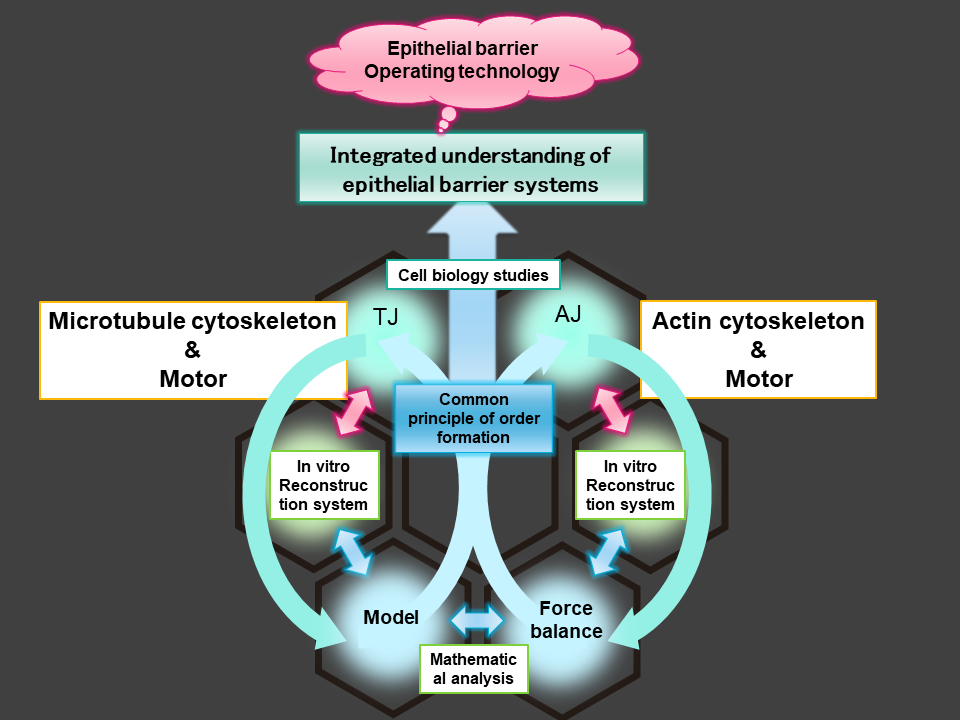Research agenda
"Cell-cell adhesion・Elucidation of the mechanism of order formation of the skeleton and development of epithelial barrier manipulation technology"
Research period:October 2013 - March 2018
Principal Investigator:Tsukiko TSUKITA(Professor,Graduate School of Frontier Biosciences, Osaka University)
Research contributor : Kazuhiro OIWA
Outline / Purpose / Methods / Results
The interaction between cytoskeletal fibers and its binding proteins (including motors) creates a phenomenon in which various forms of self-assembly are self-organized.
This has recently come to be reported by various laboratories around the world.
This is the flow of research to identify the essential elements of the phenomenon by dividing the complex phenomena in the cell into the elements and reconstructing them.
It is also a flow of understanding the general principles in which the local interaction creates a global structure.
This project is preceded by the flow of this study, and it is believed that a mathematical modeling of the results could suggest a workable operational hypothesis.
In the future, we will develop a research into how this self-organization can be controlled in a simplified manner.
。

Research results
Using the experimental system using the reconstruction system, the dynamic order analysis of microtubule and protein motor by the apical microtubule network formation in vitro was carried out, and the mathematical model was constructed based on the result. This revealed that a variety of microtubule networks could be generated by the balance between microtubule bundling ability (stickiness) and the ability to slide microtubules, the microtubule-associated proteins. By extending this reconstructed experimental system and integrating it with the mathematical model, it was possible to clarify its role in microtubule network formation of microtubule-associated proteins that increased the transcription rate during the formation process of multiciliated epithelial cells.
Significant results
Elucidation of the mechanism of microtubule network formation by the in vitro reconstitution system
Using in vitro remodeling technology, the microtubule and protein motor kinesin was quantitatively analyzed by quantitative analysis of the behavior of the network, and its mathematical modeling was succeeded in its mathematical modeling. Microtubules and kinesins are key elements of the cytoskeleton that form the basis for important vital functions, such as cell morphogenesis, cell division, and intracellular substance transport. The establishment of a dynamic observation system and establishment of a theoretical model of this network are expected to lead to the elucidation of the mechanism of the formation mechanism of the intracellular order structure that appears in various aspects of the life phenomena and the operation technology of the order structure.
